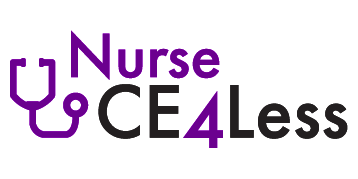Course Summary
Schizophrenia can be regarded as a chronic, life-long condition. A patient suspected to suffer from schizophrenia requires a proper diagnosis and treatment plan if the patient is expected to maintain a reasonable quality of life. An understanding of the signs and symptoms of this disorder can aid with appropriate diagnosis and minimize delay in treatment. A diagnosis of schizophrenia can be made using the Diagnostic and Statistical Manual of Mental Disorders, Fifth Edition. Treatment options that can be available for the management of symptoms of schizophrenia can include typical and atypical antipsychotics that target the symptoms and provide effective management of the disorder. The use of these medications are widely recognized for the management of schizophrenia symptoms. An understanding of the mechanisms of action between antipsychotics can affect the outcome of individual patients.
Course Format
Homestudy
Course Syllabus
- I. Introduction
- II. Defining Schizophrenia
- Pathophysiology
- Course of Illness
- Risk factors
- Subtypes of Schizophrenia
- a) Paranoid
- b) Disorganized (hebephrenic)
- c) Catatonic
- d) Undifferentiated
- e) Residual
- DSM-5 Diagnostic Criteria for Schizophrenia
- First-generation Antipsychotics
- Side Effects of First-generation Antipsychotics
- Initiation and Duration of Therapy
- Second-generation Antipsychotics
- a) Clozapine (Clozaril®)
- b) Risperidone (Risperdal®)
- c) Paliperidone (Invega®)
- d) Olanzapine (Zyprexa®)
- e) Quetiapine (Seroquel®)
- f) Ziprasidone (Geodon®)
- g) Aripiprazole (Abilify®)
- Newer Atypical Antipsychotic Agents
- a) Asenapine (Saphris®)
- b) Iloperidone(Fanapt®)
- c) Lursidone (Latuda®)
- d) Cariprazine (Vraylar®)
- e) Brexpiprazole (Rexulti®)
- f) Lumateperone (Caplytai®)
- g) Pimavanserin (Nuplazid®)
- III. Treatment Guidelines
- IV. Case Study: Schizophrenia and Antipsychotic Treatment
- V. Summary
Author
Abimbola Farinde, PhD, PharmD
Abimbola Farinde, PhD., PharmD is a healthcare professional and professor who has gained experience in the field and practice of mental health, geriatrics, and pharmacy. Dr. Farinde has worked with active duty soldiers with dual diagnoses of a traumatic brain injury and a psychiatric disorder providing medication therapy management and disease state management. She has also worked with mentally impaired and developmentally disabled individuals at a state supported living center. Her different practice experiences have allowed her to develop and enhance her professional and clinical skills over the years. Dr. Farinde always strives to maintain a commitment towards achieving professional growth as she transitions from one phase of her career to the next.


